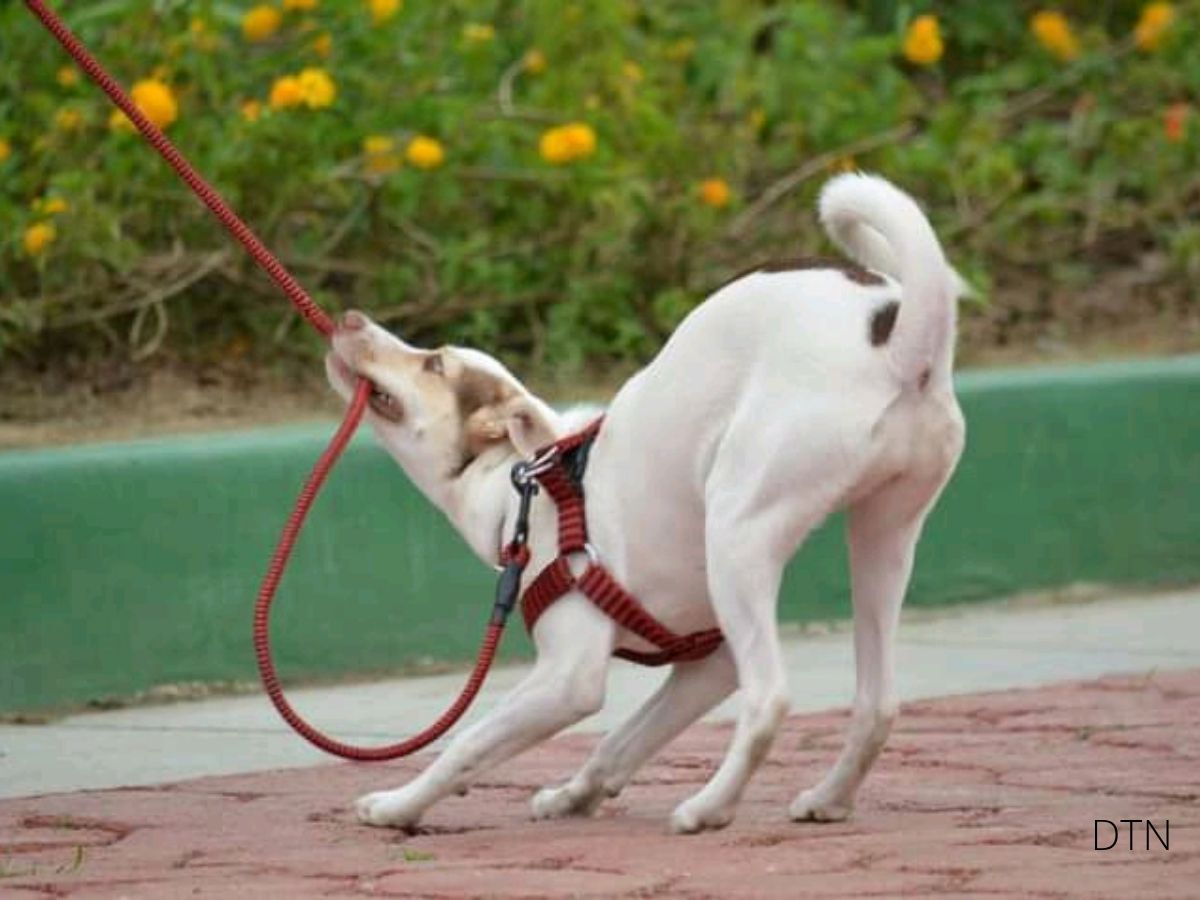Introduction: Your Pack’s Secret Mathematical Life
Ever wonder why dropping a single treat can transform your peaceful pack into instant chaos? Or how your dogs mysteriously coordinate their barking without any apparent leader? These aren’t random events—they’re glimpses into the mathematical patterns governing your multi-dog household. Understanding these hidden dynamics can revolutionize how you manage, train, and live with multiple dogs.
The fascinating truth is that your living room operates like a complex mathematical system, where tiny changes ripple into dramatic transformations. Let us guide you through this invisible world where chaos theory meets kibble, and entropy explains why your dogs sometimes lose their collective minds over absolutely nothing.
The Butterfly Effect in Your Living Room
When One Bark Changes Everything
You might notice how a single yawn from your senior dog creates a chain reaction of yawns throughout your pack. This isn’t mere mimicry—it’s the butterfly effect in action. In mathematical terms, your dogs exist in a nonlinear system where small perturbations cascade into significant behavioral shifts. That barely audible growl during dinner? It might completely reorganize tomorrow’s feeding dynamics.
The cascade typically unfolds like this:
- Subtle signal initiated (ear position change, tiny lip curl)
- Recognition ripples through nearby dogs
- Behavioral adjustments amplify the signal
- New group dynamic emerges
Think about your morning routine. Perhaps your youngest dog stretches slightly differently today, causing the middle dog to move toward the door earlier, which makes your senior dog anxious about being left behind, suddenly transforming your usually smooth morning into confusion. These aren’t coincidences—they’re mathematical certainties in complex systems. 🐾
Your Pack’s Hidden Attractors
Did you know your dogs’ social structure works like a mathematical attractor—a pattern they naturally return to despite constant fluctuations? What we call “pack hierarchy” is actually a dynamic equilibrium, constantly wobbling yet maintaining recognizable patterns. Your dogs aren’t following rigid rules; they’re navigating a fluid system that self-organizes around stable configurations.
This explains why introducing a new toy might temporarily scramble the pack order, but within days, everyone settles back into familiar patterns—though perhaps slightly modified. The hierarchy isn’t fixed like military ranks but flows like water finding its level, always seeking stability while remaining flexible enough to adapt.
Measuring the Chaos: Entropy in Pack Dynamics
Reading Your Pack’s Social Temperature
Entropy in physics measures disorder, but in your pack, it measures predictability. High entropy means chaotic, unpredictable interactions—like those first few minutes when you return home. Low entropy indicates structured patterns—like the synchronized afternoon nap. You’re actually witnessing mathematical principles that govern everything from weather systems to stock markets, playing out between your furniture.
High entropy moments in your household:
- Doorbell reactions (everyone responds differently)
- New visitor arrivals (unpredictable greetings)
- First moments at the dog park (chaotic exploration)
Low entropy patterns you recognize:
- Morning bathroom parade (same order daily)
- Bedtime positions (everyone has their spot)
- Mealtime choreography (predictable positioning)
By recognizing these entropy patterns, you can predict when chaos is likely and intervene before critical thresholds are crossed. That growing excitement during pre-walk preparation? That’s entropy building toward a breaking point where organized behavior collapses into chaos.
The Tipping Points You Never Noticed
There are invisible thresholds in your home where order suddenly transforms into disorder—or vice versa. Scientists call these bifurcation points, but you know them as “that moment when everything goes sideways.” These critical thresholds explain why three dogs playing nicely suddenly explode into a resource guarding incident when you add just one more toy to the mix.
Research reveals that groups have specific breaking points based on:
- Space per dog: Below certain square footage, stress behaviors emerge
- Resource ratios: Too few resources trigger competition cascades
- Arousal accumulation: Play intensity has a mathematical ceiling
- Social load: Each additional dog exponentially increases complexity
Understanding these thresholds helps you recognize why your three-dog household was peaceful, but adding a fourth created unexpected chaos. You didn’t just add one more dog—you exponentially increased the system’s complexity, potentially pushing past a critical stability threshold. 🧠
Dogs are better than human beings because they know but do not tell.
– Emily Dickinson

Feedback Loops: Your Pack’s Invisible Controllers
Escalation Spirals and Natural Brakes
Every interaction between your dogs involves feedback loops that either amplify or dampen behaviors. Positive feedback loops escalate situations—one dog’s excitement triggers another’s, creating an excitement spiral that ends with someone jumping on grandma. But negative feedback loops act as behavioral brakes, like when your calm senior dog’s deliberate yawn defuses tension between younger pack members.
Positive feedback spirals you recognize:
- Barking chains (one starts, all join)
- Play escalation (rougher and rougher until…)
- Competitive resource approaches
- Doorbell pandemonium
Negative feedback stabilizers include:
- Calming signals from confident dogs
- Play bows resetting intense moments
- Strategic walking away
- Appeasement gestures stopping conflicts
By identifying and managing these loops, you become a conductor orchestrating your pack’s behavioral symphony. Interrupting positive feedback before it reaches critical mass, while reinforcing negative feedback that promotes stability, transforms chaotic households into harmonious ones.
Practical Magic: Applying Chaos Theory at Home
Predicting and Preventing Daily Drama
Understanding your pack’s mathematical nature transforms daily management. Instead of reacting to problems, you’ll predict them. Notice how conflicts often occur when multiple variables align? Perhaps it’s always: rainy day (no walk) + delivery truck (arousal spike) + late dinner (resource stress) = guaranteed squabble. This isn’t superstition—it’s recognizing how multiple perturbations push your system toward chaos.
Start tracking patterns:
- When do conflicts typically occur?
- What combinations of events precede problems?
- Which dogs act as stabilizers versus disruptors?
- How long does your pack need to recover from disruptions?
You’ll discover your pack’s unique dynamics. Maybe conflicts predictably occur 90 minutes after high-arousal events, or perhaps Sunday evenings are always tense because weekend schedule changes accumulate into systemic stress. These patterns, once recognized, become manageable.
Entropy Management Strategies
Reducing entropy doesn’t mean eliminating fun—it means strategic predictability where it matters most. Create stability anchors throughout your day while allowing controlled chaos during appropriate times.
Entropy reduction techniques that work:
- Consistent meal times and locations (temporal stability)
- Designated spaces for different activities (spatial predictability)
- Routine calm periods after excitement (recovery rhythms)
- Predictable human responses (behavioral consistency)
Think of yourself as an entropy engineer, designing systems that naturally guide your pack toward beneficial patterns. That baby gate preventing kitchen chaos during cooking? You’re physically reducing spatial entropy. The afternoon puzzle toys? You’re channeling mental energy into low-entropy focused activity.
Beyond Dominance: Flow-State Training
Traditional training assumes linear relationships—more discipline equals more control. But your pack operates in nonlinear reality where tiny interventions at perfect moments create massive changes. Instead of dominance, think flow states—finding natural behavioral currents and gently directing them.
This means:
- Recognizing sensitive moments where small inputs have large impacts
- Shaping environmental conditions so desired behaviors emerge naturally
- Strengthening beneficial patterns rather than suppressing unwanted ones
- Building resilience through controlled, manageable challenges
For example, instead of commanding “quiet” during barking chaos, you prevent the cascade by interrupting the first bark with redirection, stopping the positive feedback loop before it gains momentum. You’re not controlling your dogs—you’re conducting the mathematical symphony of their interactions.
Conclusion: Embracing Your Pack’s Beautiful Complexity
Your multi-dog household isn’t random chaos—it’s a sophisticated dance between order and disorder, following mathematical principles that govern everything from galaxies to garden ant colonies. By understanding these hidden patterns, you transform from reactive manager to proactive conductor, anticipating problems before they manifest and nurturing beneficial dynamics that emerge naturally from your pack’s complex interactions.
The butterfly effects, strange attractors, entropy fluctuations, and feedback loops in your living room aren’t problems to solve—they’re the fundamental nature of social life, allowing your dogs to adapt, learn, and thrive together. This mathematical perspective doesn’t diminish the emotional bonds you share; it deepens your appreciation for the remarkable complexity of canine social life.
Is this approach right for your pack? If you’re ready to see beyond simple dominance hierarchies and discover the elegant mathematics hiding in daily dog drama, then yes. You’ll find yourself predicting problems before they occur, intervening with minimal effort for maximum benefit, and creating a more harmonious household by working with, rather than against, your pack’s natural dynamics. The chaos isn’t the problem—misunderstanding it is. Welcome to the beautiful complexity of multi-dog mathematics. 🧡






